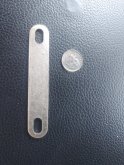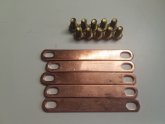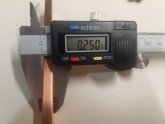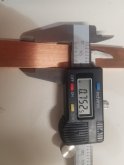I received the same pathetic bus bars with mine. So thin that the bolts they supplied bottomed out long before securing them.
View attachment 16269View attachment 16270
The size of the bus bars will be determined by the intended current draw of your system. If you don't plan to draw more than 20A, then the little ones will probably work.
Flattening out some 1/2" copper pipe and cutting/drilling will do the trick. If you use a vice with padded jaws to flatten it, the results are more refined.
For the professional results, buy some bar stock and cut/drill.
If I can find 6mm aluminum bolts, im going to go with larger aluminum bus bars. This way, any galvanic corrosion will be visible at the terminals.
View attachment 16271View attachment 16272







